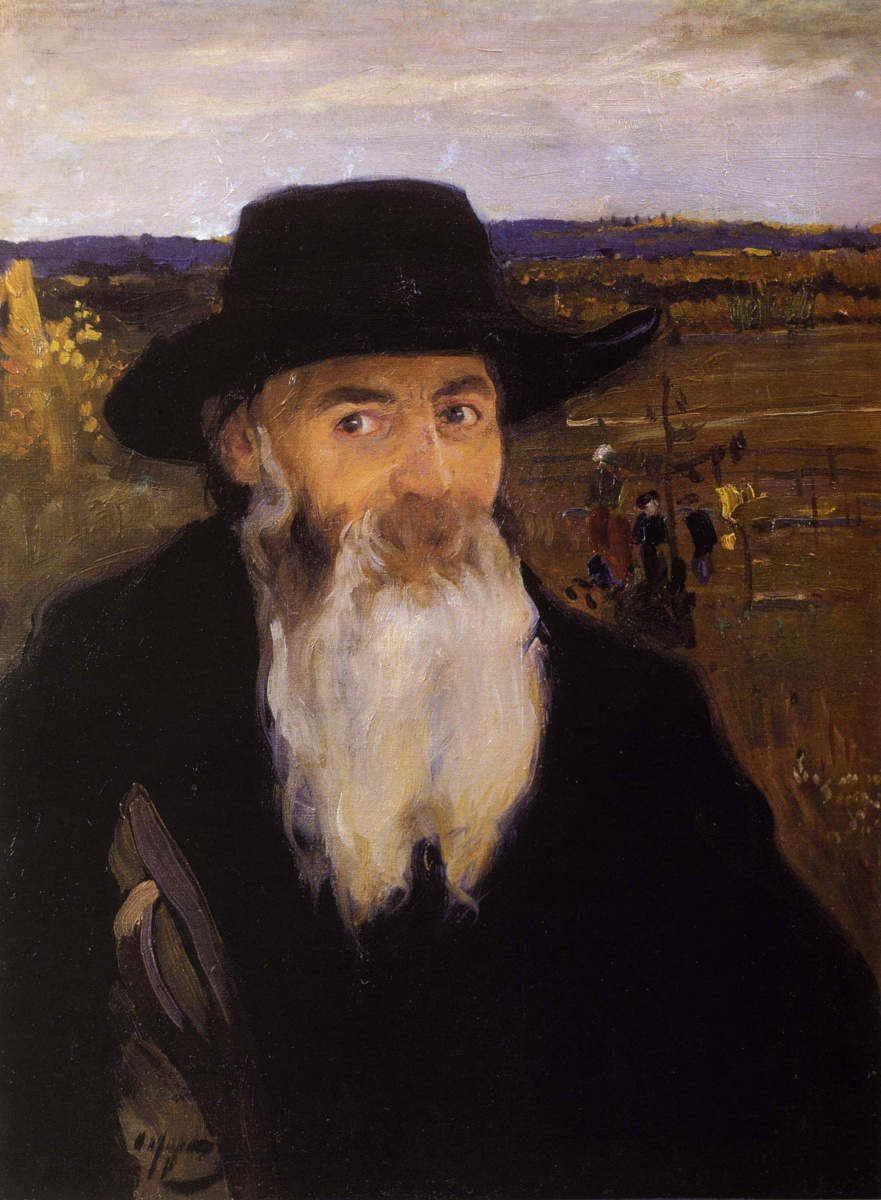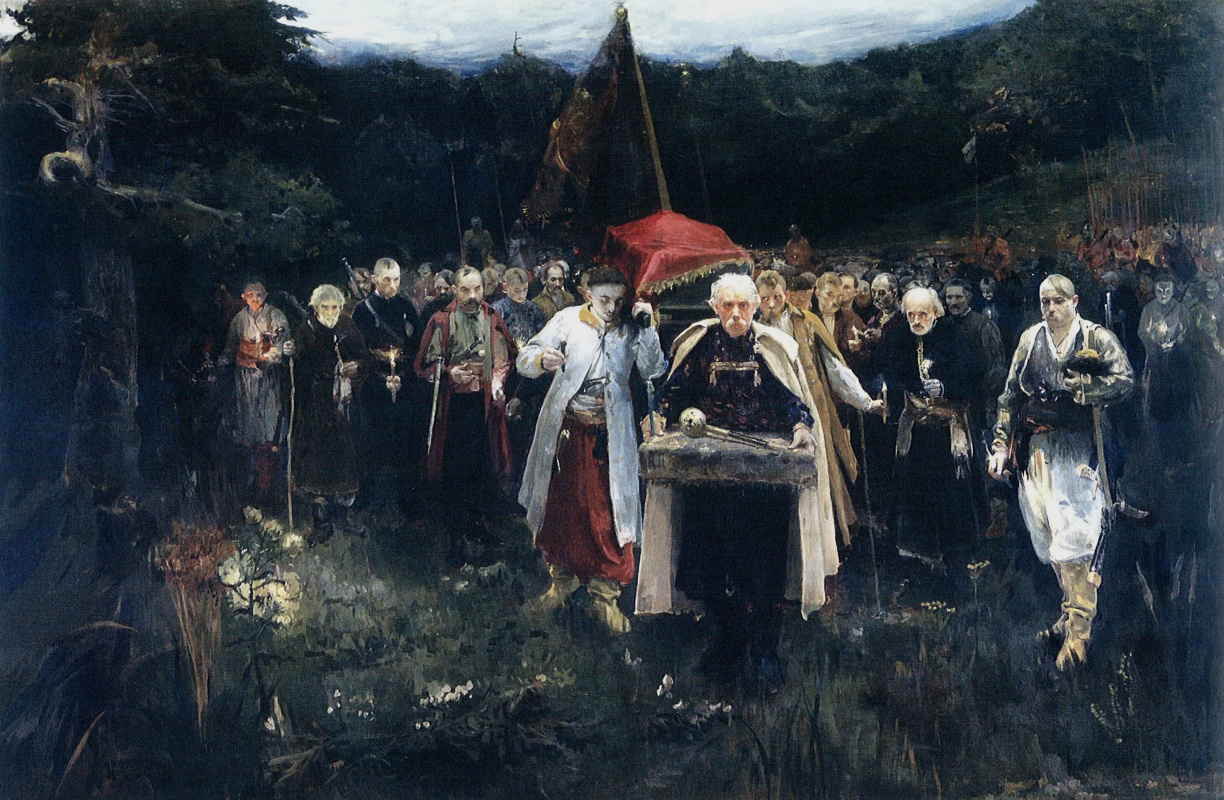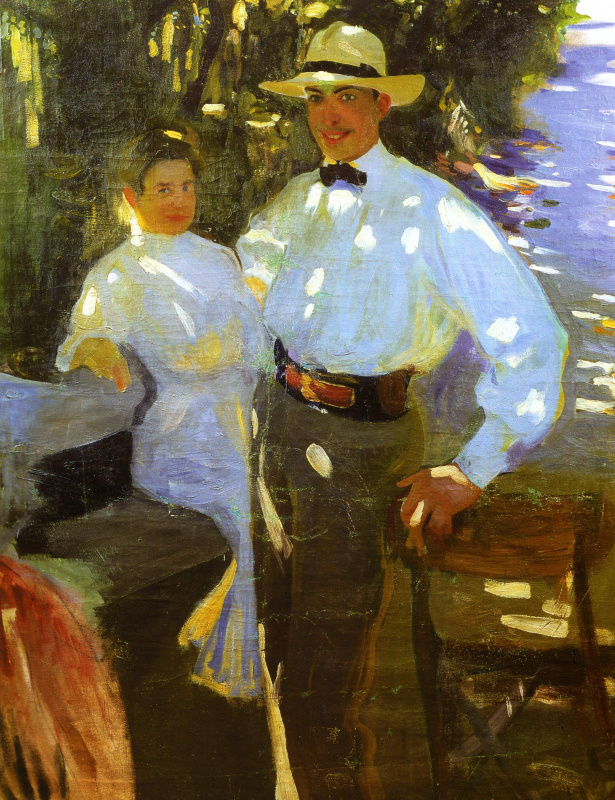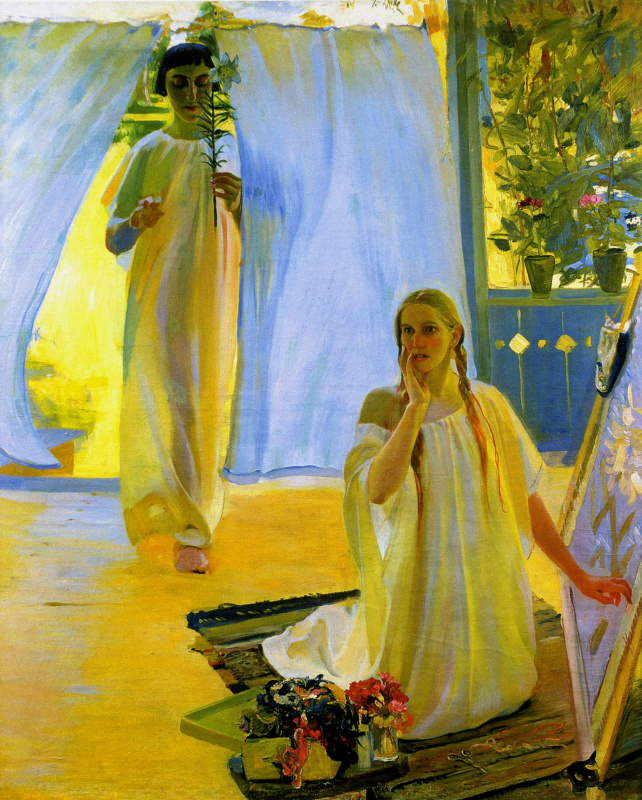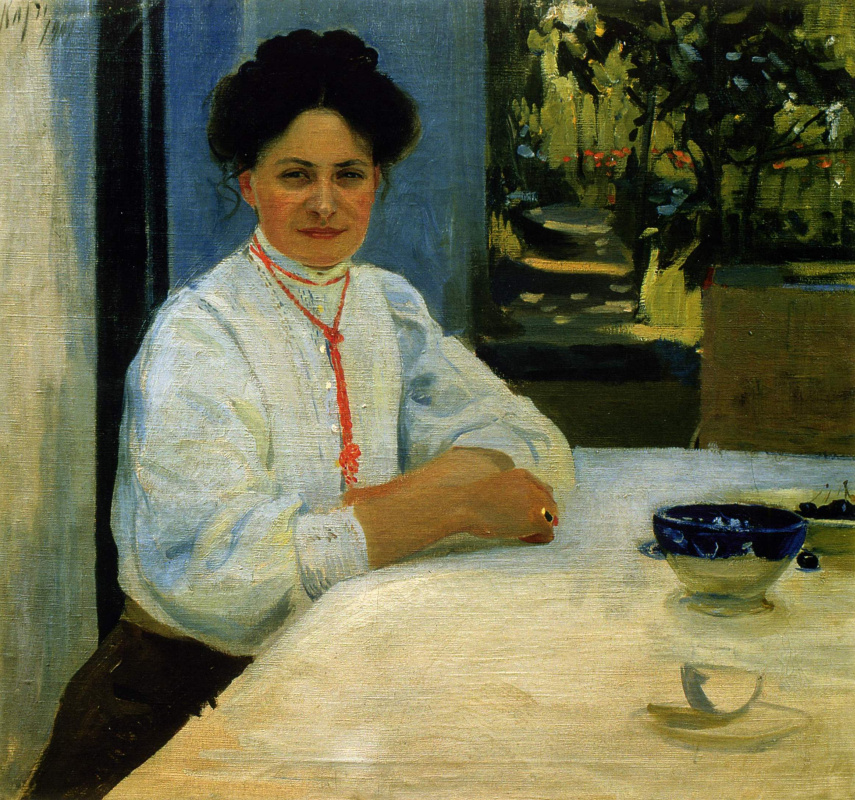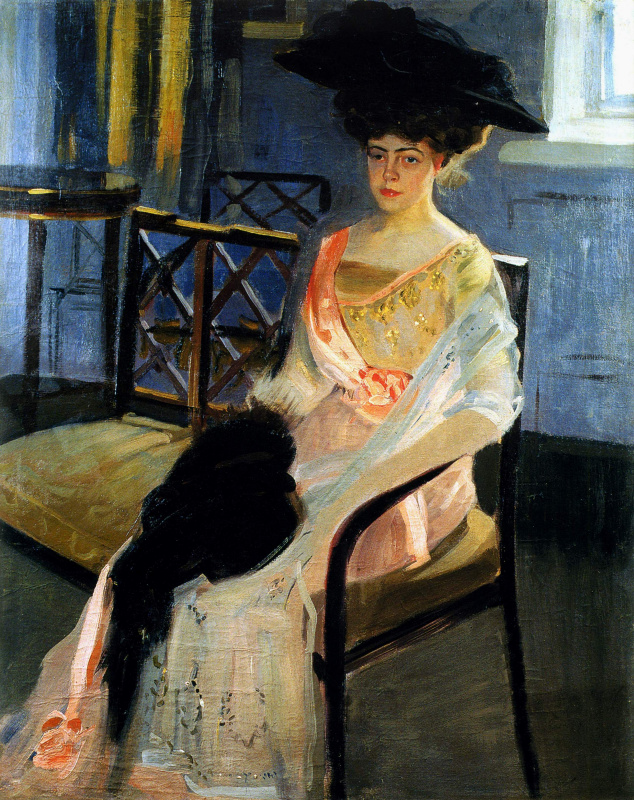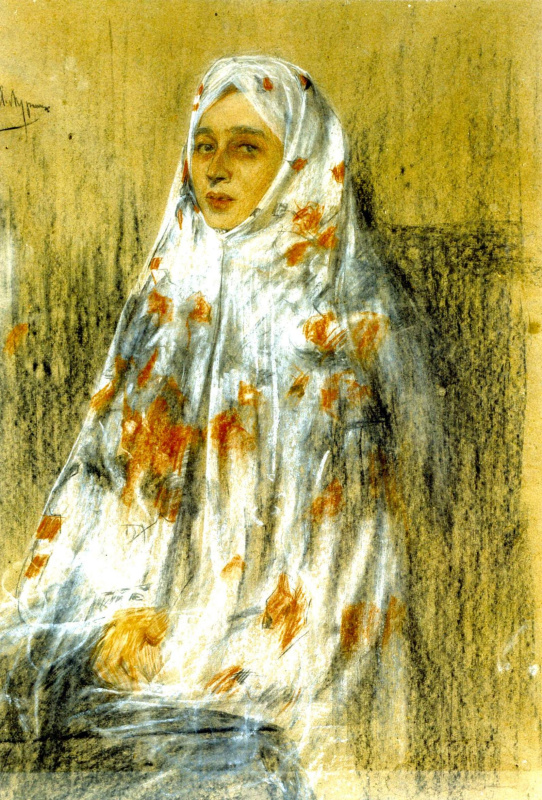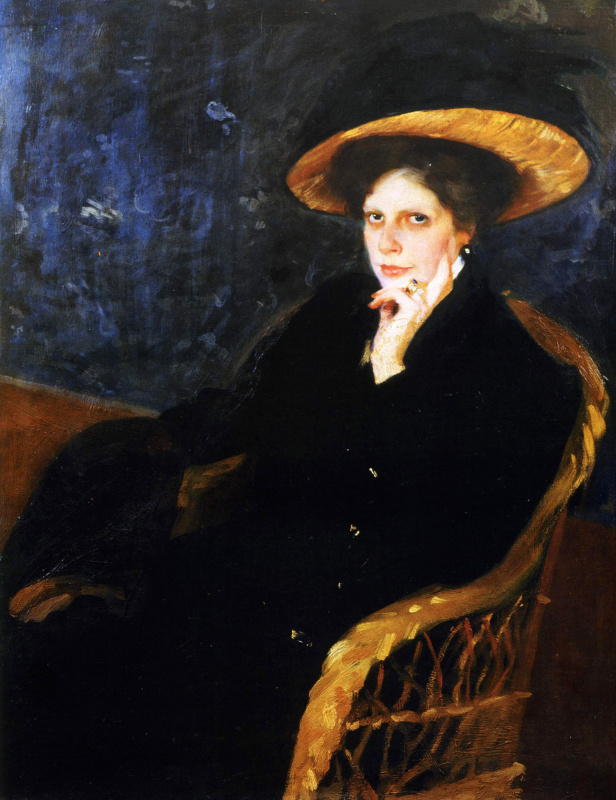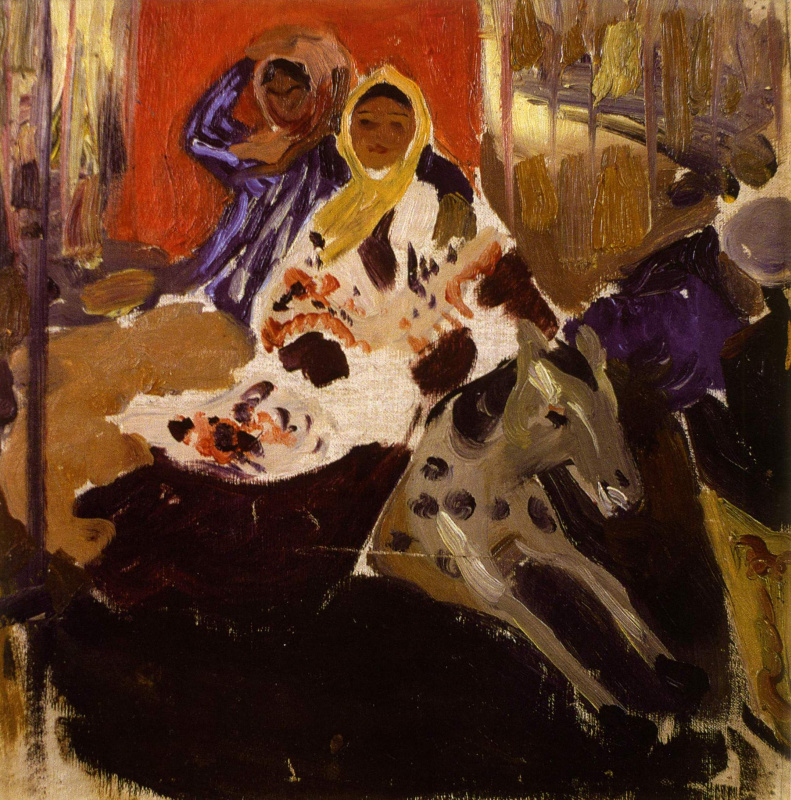He was an outstanding portrait painter, gained European fame, became one of the founders of the Ukrainian Academy of Art, and then died in his prime, at less than 44 years old. We have marked a dozen strokes for the portrait of the painter and public figure Oleksandr Murashko.
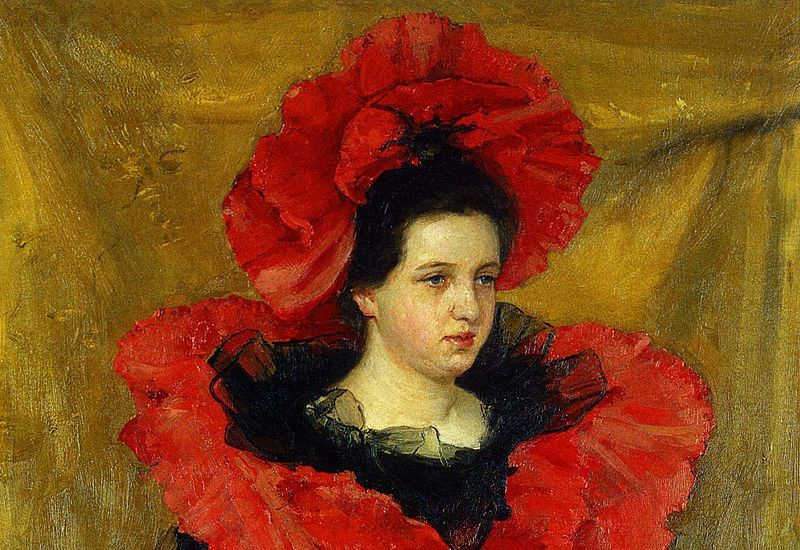
1: Foster, nephew, stepson
For the first third of his life, Oleksandr bore the last name of his mother, Krachkovsky. Maria Krachkovska gave birth to the boy out of wedlock, gave it to strangers for upbringing, but her brother found the child and took him to his family. By the way, his other uncle, his stepfather’s brother, would have a huge impact on the fate of Oleksandr later, but more on that below.The boy spent his early childhood in the Chernihiv region, under the supervision of a loving grandmother. When Oleksandr was eight, his mother got married and took her son to Chernihiv. His stepfather was Oleksandr Ivanovych Murashko, the owner of an icon-painting workshop.
2. Apprentice
In 1887, the family moved to Kyiv; the St. Volodymyr Cathedral was under construction there, and Murashko’s studio received orders. Art historian Adrian Prakhov supervised the decoration of the cathedral. He involved Viktor Vasnetsov, Mikhail Nesterov, Mikhail Vrubel to this work.
Portrait Of A. V. Prahov
1904, 129×128 cm
Young Sashko Murashko had the opportunity to observe the work of outstanding artists and he himself worked in his stepfather’s studio. Once he made a copy of an icon of the Mother of God painted by Vasnetsov. The artist approved his work and noted the talent of the teenager. And Mikhail Nesterov became Oleksandr’s senior friend and mentor for life.
3. Stubborn
According to the recollections of relatives, young Oleksandr was very modest and suffered from stuttering. But at the same time, the shy boy was incredibly stubborn. He wanted to become an artist, but his stepfather only saw him as the heir of his studio in the future, as an artisan icon painter, so he sent his stepson to an icon painter as an apprentice. The teenager copied icons and primed boards, but at the same time, he secretly attended lessons at the Kyiv Drawing School led by his stepfather’s brother, Mykola Murashko. However, neither academic success, nor the support of his uncle, nor the intercession of Vasnetsov himself convinced his stepfather. After another quarrel with him, Oleksandr left home. He lived from hand to mouth among barge haulers, spent nights on rafts, but he drew sketches and overcame his timidity to bring them to Prakhov. Prakhov appreciated the work of the young man, approved his decision to enter the St. Petersburg Academy of Arts and funded him.
Old teacher (a portrait of the artist N. And. Murashko)
1906, 70×52 cm
4. Student
Oleksandr Murashko entered the Academy of Arts; moreover, he became a student of the most popular teacher at that time, Ilya Repin.In Repin’s studio, the portrait genre was in the focus. Oleksandr Murashko painted his relatives and classmates, his works received prizes at exhibitions, they were bought by collectors. However, when, under the patronage of Repin, Murashko received an order to paint a portrait of some noble lady, it often ended in failure — because of the young artist’s uncertainty and ignorance of the rules of secular etiquette.
Portrait of the artist G. Tissa
1890-th
, 91×72 cm
In 1903, the 10th anniversary of Ilya Repin’s teaching activity at the Academy of Arts was celebrated. By this date, the students, together with the master, have created a kind of group portrait, Model Statement in the Studio of Ilya Repin. Oleksandr Murashko was instructed to paint the figure of the master into the composition, Boris Kustodiev painted Murashko himself, while Kustodiev and Murashko painted the figure of the model together.
Oleksandr Murashko spent all his holidays at home, where he painted a lot, inspired by Ukrainian types, nature and everyday life. Finishing his studies at the Academy, he chose a historical plot for his programmatic work. For the Burial of a Kish Otaman painting, Murashko received the title of a free artist and a pension from the Academy for a trip to Europe.
Funeral Mishka
1900, 230×360 cm
5. Parisian sinner
Fascinated by Paris, Oleksandr Murashko painted In a Café painting and sent it to the Academy as a report on his trip. At the 1902 academic exhibition, the canvas received good reviews, the artist stayed in Europe for another year, rented a studio in Paris and worked a lot. But the rest of the works of his Parisian Coffee Houses cycle were received in St. Petersburg very coldly, and in the future Murashko rarely showed them to anyone, calling these paintings "sins of youth".Murashko went from Paris to Munich, where he attended classes at the famous school of Anton Ažbe.
6. Painter of the light
Oleksandr Murashko did not immediately find his artistic language and his palette. At first, his work was distinguished by restrained colours, but then the palette became brighter. Mykola Murashko, observing the creative searches of his nephew, wrote in his diary: "The pursuit of the power of the sun, the spots is interesting".In Europe, Oleksandr Murashko was appreciated earlier than at home. He returned to St. Petersburg, but constantly participated in exhibitions in Rome, Vienna, Venice, Amsterdam, etc. In 1909, his Carousel painting won a Gold Medal at the international exhibition in Munich. In 1910, Murashko’s personal exhibition was shown in Berlin, Cologne and Düsseldorf. One of the German critics wrote: "His calling is light". In the press, they called Murashko "the artist of light".
7. Happy husband
In 1909, Oleksandr Murashko moved from St. Petersburg to Kyiv and married Marharyta Kruger, a daughter of a Kyiv notary, a graduate of the Smolny Institute for Noble Maidens. By the way, this marriage made Murashko related with the Prakhov family: Adrian Prakhov’s son married Marharyta’s sister, Anna Kruger.
Portrait of M. A. Murashko in Capri
1909, 89×96 cm
Marharyta Avhustivna, a beautiful and educated young woman, became a wife, model and assistant to the artist. Murashko did not have children of their own, but the couple raised their adopted daughter Kateryna.

Marharyta Murashko. Photo Source.
8. Teacher
In the autumn of 1909, Oleksandr Murashko was invited to teach at the Kyiv Art School. He became the youngest teacher here and the only one who wanted to introduce the traditions of European academies and schools into teaching. But he failed to change anything at the school, and in the autumn of 1913 the artist opened his own studio. It was located on the top floor of the tallest building in Kyiv, the famous Ginzburg skyscraper (this 12-storey building 67.5 metres high was considered the first skyscraper in Ukraine; it has not survived to this day).
View of Kyiv. The Ginzburg skyscraper is to the right. 1910s or 1920s. Photo source — wikimedia
Remembering his poverty-stricken youth, Murashko often helped students from poor families, bought canvases and paints for them. In fact, Oleksandr followed the path of his uncle, Mykola Murashko, who also opened his own drawing school and helped the poor get an art education.
9. Portrait painter
Oleksandr Murashko became famous as a portrait painter and was popular among the Kyiv elite and in the two capitals of the Russian Empire , but this did not please him. Murashko was afraid to turn into a fashionable salon artist, to change his style to please the customer. Going to Moscow to see the prince and princess Obolensky, he wrote to his wife: "…will fate send me strength and a bright head to stay at the artistic height and satisfy the tastes of the "public"? The task is terrible and the path is slippery." However, strict critics noted that the artist managed to keep the composition laconic, without resorting to decorative effects.Murashko yet tried to work less on commission and more often painted for his friends and relatives — first of all, his wife, cousin Georges (his life was short: in 1914 he went to the front and died in the very first battle), members of Nesterov and Prakhov families.
10. Victim
At the end of 1917, after the proclamation of the independent Ukrainian People’s Republic, the first Ukrainian national higher art educational institution, the Academy of Arts, was opened. Murashko got involved in the process of creating the Academy, began teaching there, but it was impossible to hold classes as they should be: the premises were not heated, there were no materials and, moreover, confusion reigned in the very organization of the educational process.
Founders of the Ukrainian Academy of Art. Oleksandr Murashko is second from the left. 1917. Photo Source — wikimedia
In September 1918, in a letter to his cousin, Oleksandr Murashko admitted that he had been painting almost nothing for two years already, and expressed his hope: "…when I repay the debt to society, they will release me in peace for my quiet work". But he was not destined to leave "in peace".
At the beginning of 1919, Soviets invaded to Kyiv. Oleksandr Murashko continued his work at the Academy, in addition, he was invloved to work by the Arts Committee under the People’s Commissariat of Ukraine: Murashko was appointed Head of the Department of the All-Ukrainian Publishing House. He had to deal with the publication of posters and other works to decorate the city for revolutionary holidays.
At the beginning of 1919, Soviets invaded to Kyiv. Oleksandr Murashko continued his work at the Academy, in addition, he was invloved to work by the Arts Committee under the People’s Commissariat of Ukraine: Murashko was appointed Head of the Department of the All-Ukrainian Publishing House. He had to deal with the publication of posters and other works to decorate the city for revolutionary holidays.

Celebration on 1 May 1919 on Sofia Square. Photo Source
At the same time, the "rich" artist was included in the list of persons who had to pay an indemnity. For non-payment of the required 25 thousand karbovanets Murashko was arrested and sent to forced labour, but a day later he was released thanks to the efforts of his wife, who got the necessary certificate.
On 14 June 1919, Oleksandr and his wife returned home late at night. They were stopped by three unknown men. The wife was allowed to leave, and Oleksandr Oleksandrovych was taken away, ostensibly to check his documents. Soon his body was found nearby — Murashko was shot in the back of the head.
He was buried on a quiet June day. According to the artist’s widow, the coffin had a lot of flowers around, and a wreath of cornflowers with a blue ribbon stood out among them.
On 14 June 1919, Oleksandr and his wife returned home late at night. They were stopped by three unknown men. The wife was allowed to leave, and Oleksandr Oleksandrovych was taken away, ostensibly to check his documents. Soon his body was found nearby — Murashko was shot in the back of the head.
He was buried on a quiet June day. According to the artist’s widow, the coffin had a lot of flowers around, and a wreath of cornflowers with a blue ribbon stood out among them.
Flower Saleswomen
1917
It was the deep blue colour that was so often found in the paintings of Oleksandr Murashko, especially in his last fine mature works.
Woman with nasturtiums
1918, 92×66 cm
Who and why killed Oleksandr Murashko? Some were sure that the Chekists destroyed him, although there was no evidence of his open confrontation with the new government. Others believed that, on the contrary, it was the revenge of the Ukrainian nationalists for his cooperation with the Soviets. The artist H. Lukomsky, who also worked at the All-Ukrainian Publishing House, believed that Murashko was killed by the Cheka, but as result of a mistake, due to confusion in the lists of those to be murdered. Well, Soviet historians adhered to the version of an ordinary robbery (although the widow said that valuable things remained with the deceased). One way or another, but the murder of the artist was not solved.
11. Heritage
Many of Oleksandr Murashko’s works outlived their author for a short time. For example, his works were in the collection of a prominent Kyiv public figure O. N. Tereshchenko. A significant part of this collection perished during the civil war.
Carousel. Sketch
1905, 40×40 cm
Murashko’s paintings that were exhibited at international exhibitions, as a rule, did not return to their homeland. They were bought by galleries and collectors. For example, the already mentioned Carousel was acquired by a collector from Budapest, and its further fate is unknown. Presumably, the work could be located in a castle damaged by a bombing during the Second World War. Also lost are the traces of the paintings Sunday Day and On the Terrace. Portrait of Marharyta Murashko, which were exhibited at the IX Venice Biennale (1910). Only sketches have survived, as well as reproductions of these paintings, published in European magazines.

Photo of O. Murashko’s painting Evening (On the Mountain), 1914.
The location of the artwork is unknown.
12. Marharyta. Manuscripts Don’t Burn
Soon after the death of Oleksandr Murashko, his widow wrote memoirs about her husband, including about his last days and death. For many years this manuscript was kept in the family of the Prakhovs' descendants, and then fell into the hands of researchers. In 2016, the memories of Marharyta Murashko were finally issued.Marharyta Murashko herself also became a victim of the terrible time. For many years she worked to preserve her husband’s creative heritage, and in the 1930s she remarried and left Kyiv. According to some reports, she was soon arrested along with her husband. He was shot, and she was sent to a camp. Her further fate is unknown.
Murashko’s adopted daughter Kateryna married early and left for Moscow. In the early 1960s, she came to Kyiv to an exhibition of her stepfather’s works. There is no other information about her.
…The true circumstances of the artist’s murder are unknown, there is no exact information about the fate of his loved ones, many paintings have been lost. But, fortunately, many of Oleksandr Murashko’s works have survived, and they are full of the sun.
Murashko’s adopted daughter Kateryna married early and left for Moscow. In the early 1960s, she came to Kyiv to an exhibition of her stepfather’s works. There is no other information about her.
…The true circumstances of the artist’s murder are unknown, there is no exact information about the fate of his loved ones, many paintings have been lost. But, fortunately, many of Oleksandr Murashko’s works have survived, and they are full of the sun.
P.S.
A son of the owner of the icon painting studio, abandoned by his parents, then studied at the Academy of Arts under Repin, participated in European exhibitions, became famous as a portrait painter, taught… Do you think that you have already heard all this somewhere? Apparently, you recently got acquainted with the biography of another Repin’s student, Nicolai Fechin. If not, read this text and find the differences between the fates of the two wonderful artists.The material is prepared based on the monograph by L. Chlenova "Oleksandr Murashko. Pages of life and creativity".







